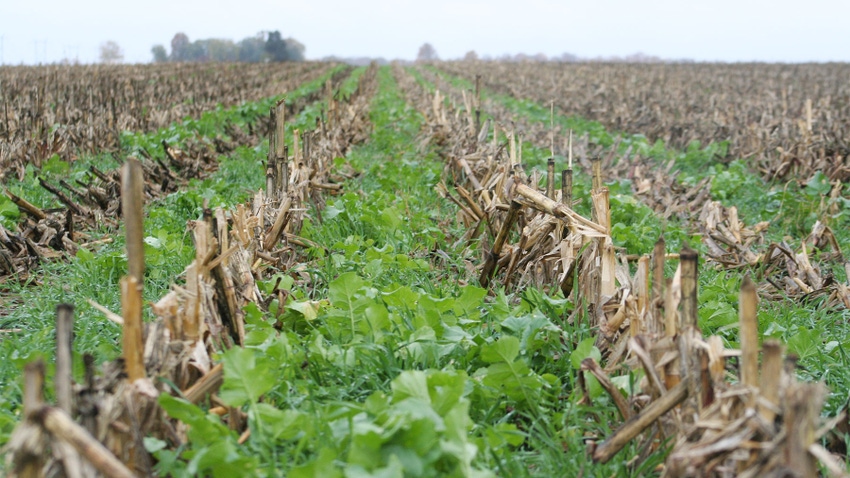April 4, 2024

It’s easy to feel like you’re behind while sitting through various conferences and workshops. The speakers are sharing too much information to digest, the other attendees seem to have their own experiences to share, and you may be left feeling like you have no idea where to start.
I felt this way at a soil conservation event recently where a speaker said farmers should ditch inorganic fertilizers and pesticides, and all forms of tillage. Rather, this speaker explained that the best solution moving forward is composting.
This view overwhelmed me because that is a lot to demand from farmers who are already struggling with high input costs and low commodity prices. The risk of taking a yield hit is too high, and the information overload can feel like trying to drink from a fire hose.
Don’t take it to extremes
Despite what some speakers may tell you, you don’t need to adopt all new practices all at once — especially when it comes to conservation. The possibility of yield loss and pest and disease pressure looms over that idea of ditching everything you know and diving into the unknown. Trying to force people into one box or the other is just going to create friction.
Instead, start experimenting with practices you’re interested in on small acreages until you find your groove. This could mean testing out cover crops on a field or switching to no-till on some acreage. If you’re trying something, that is progress.
A concept that is gaining traction recently is regenerative agriculture. There are three core principles to this method:
minimal disturbance to the soil
soil always covered
diverse crop rotations
A fourth occasional factor is integrating animals with the crops, but that is not necessary. Combining these principles leads to healthier soils and a potential reversal of the soil degradation that has plagued Indiana farmers for decades.
Prioritize low-stakes changes
Making small changes to better align with regenerative agriculture principles makes more sense to me than completely cutting out every practice in your operation at once, like some speakers recommend. All it takes is a simple mindset shift.
“We kind of lost sight in agricultural research of the goal of soil biology in terms of maintaining soil fertility in agriculture,” says David Montgomery, who co-founded Dig2Grow with his wife, Anne Biklé. “Regenerative agriculture really emphasizes cultivating soil life.”
Moving forward with that belief can help fuel adoption of conservation practices, rather than scaring farmers into one of two boxes where they either continue business as usual or ditch everything they know in hopes of pleasing specialists who say this is the only right way.
Montgomery explains that some simple changes that can align your operation with regenerative agriculture include introducing cover crops and switching to a low-till or no-till system on some acreage. He recognizes that the practices need to be matched to the setting; this is not a one-size-fits-all situation.
Montgomery says one thing he came to realize is regenerative agriculture practices need to be flexible in terms of how they’re applied and carried out on the landscape.
This flexibility should be a guiding light. An operation is not going to be changed overnight, and you do not need to flock to the extremes to show that you care about conservation practices. Understand that your farm is different than others around you, and tailor your adoption of these practices to meet your needs and goals.
About the Author(s)
You May Also Like






